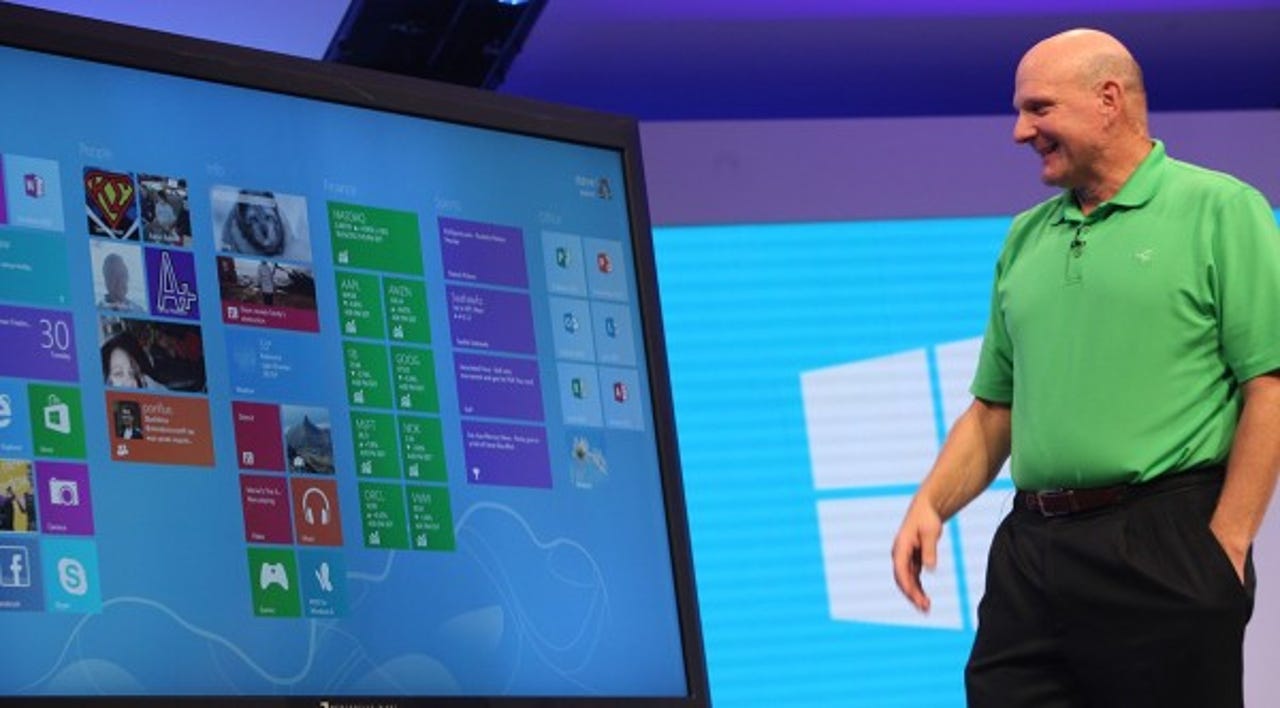Businesses should start using Windows 8 now

Many businesses appear to have got the transition from Windows XP to Windows 7 wrong, which has almost certainly cost them significant sums in lost productivity and increased support costs. The question now is whether they're going to make the same mistakes again when it comes to making the transition from Windows 7 to Windows 9 or possibly 10.
Perhaps today's not-quite-so-smart companies could emulate yesterday's smarter ones and scout their route in advance? This means exploring Windows 8 now, and perhaps adopting it for some small pilot projects. Nobody is proposing enterprise-wide roll-outs at this stage, not even Microsoft.
Even so, businesses should already be testing their Windows 7 apps for compatibility, and making sure they're not developing programs that won't work with Windows 8 and Internet Explorer 10. They should also be getting some experience of programming apps for the new applications programming interface, WinRT, and the workings of the Windows app store. There may even be commercial or promotional opportunities in developing cheap or free apps for consumers, especially if these can easily be derived from current Silverlight apps or web properties.

Yes, we know Windows 7 will be around for the rest of the decade, with extended (paid for) support starting on 12 January 2015. However, Windows 8 involves some significant shifts in technology compared with the relatively minor upgrade from Windows XP to Windows 7. These include the new API (WinRT), new UI (Metro-style user interface), new type of CPU (the ARM processor), new distribution system (Windows Store), new form factors (eg tablets like the Microsoft Surface) and new companion devices (such as smartphones running Windows Phone 8).
These innovations are likely to create new problems, but they may also provide new opportunities and new solutions.
Many of these opportunities will be mobile, and some will exploit the new touch-based user interface. Examples from my recent blog post (Windows 8's enterprise play: evolution not revolution) include BT issuing field engineering staff with touch-screen convertibles, and Poste Italiane providing business-to-business sales reps with customer relationship apps developed in house.
Several American companies have also been working with Microsoft on early-experience projects including Twentieth Century Fox Television Distribution, Johnson & Johnson Services, Rooms To Go, Bank of America and PCL Constructors.
Johnson & Johnson has published a new Windows 8 app for consumers, Digital Health Scorecard, via the Windows Store. Furniture retailer Rooms To Go a has developed Windows 8 line-of-business apps that sales staff can use by the customer's side, and Bank of America Mobile has published a mobile banking app for Windows 8. PCL's Safety Management Center enables field staff "to record observations while on the construction site and simultaneously fill out inspection forms remotely".
Most substantial businesses should be able to find small projects where a new app will rapidly repay the investment, especially if they can use Windows 8's tablet features. However, the real point is not to make money, but to gather experience and to make sure that today's IT developments are aligned with the likely future.
And from the point of view of publicity, feedback and industry (or Microsoft) support, it's much better to try these experiments as one of 1,000 companies than as one in 10,000,000.
This is basically the advice as I gave for Vista, and I think that the companies that used and tested Vista (without adopting it) were in a much better position to take advantage of Windows 7 than the ones who stuck their heads in the sand over Windows XP, and are now entering what Gartner calls the "XP danger zone". Seriously, if you're in a hole now, what have you been doing in the six years since Windows Vista Beta 2 was released in May 2006?
Denial doesn't get you anywhere. Worse, it can make it harder, and more stressful, and more expensive to move on when moving on finally becomes unavoidable.